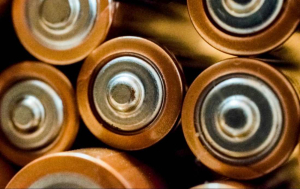Two-Way Radios: Maintenance and Lifespan Extension
Two-way radios are essential communication tools in various industries, from construction sites to security operations. Proper maintenance not only extends their lifespan but also ensures optimal performance.
In this blog, we will explore effective strategies for maintaining and extending the life of your two-way radios, focusing on best practices, troubleshooting, and care tips that can help you get the most out of your investment.
Understanding Your Two-Way Radio
Two-way radios operate on radio frequencies, allowing users to communicate over short to medium distances. Familiarising yourself with the components and features of your device is the first step towards effective maintenance.
Keeping your two-way radio clean is vital for its longevity. Dirt and grime can affect performance and lead to malfunctions over time.
Regular Cleaning Practices
Let’s see how you can keep your radios in excellent condition for the long term by following some regular maintenance tips.
Cleaning the Exterior
Use a Soft Cloth to gently clean the outer casing of the radio with a microfiber cloth. This will clear away the dust and dirt and prevent scratches.
Use water or a mild cleaner as harsh chemicals can damage the surface, which may lead to weakened materials and early failure.
Cleaning the Speaker and Microphone
Use Compressed Air to blow out dust from the speaker and microphone openings. This is vital in maintaining the sound quality.
Use cotton swabs to clean the areas softly, with no moisture getting into the device. In that case, it might damage the inner parts.
Disinfecting Your Radio
Use alcohol wipes especially when cleaning surfaces, especially if several people are handling your radio.
Ensure you use not very wet wipes so they will not get seeped into the compartments of the device.
Battery Maintenance
The battery is the most vital part of a two-way radio. Proper care will make it last much longer.
Unplug the charger once the battery has completed charging to avoid overheating. Overcharging may lead to swelling and even damage to the battery.

Try to use partial discharges instead of full cycles to prolong battery life. Lithium-ion batteries, in particular, benefit from this practice.
Storage Tips
- Cool, Dry Place: Store your batteries in a cool, dry place to avoid degradation. High temperatures can ruin the batteries.
- Regular Use: If you’re not using it on a regular basis, charge it every couple of months to maintain its health. If the batteries remain undischarged for a long time, they may not hold charge anymore.
Replacement Considerations
- Know When to Replace: Pay attention to the battery performance. If runtime is drastically shortening, it’s probably time to replace it.
- Use Manufacturer-Approved Batteries: Always use the recommended replacement batteries in order not to void a warranty and damage your equipment through incompatibility.
Software Updates and Firmware
Updates of software and firmware of your radio make sure that your radio will work effectively as well as securely.
Benefits of Updates
- Improved Performance: Upgrades can strengthen functionality and even fix bugs. New functionalities can also be added to make it user-friendly.
- Enhanced Safety: Regular updates keep vulnerability in check, hence safe communication.
How to Update
- Manufacturer’s Website: The first place to look for new upgrades and instructions is on the manufacturer’s website. Most manufacturers have outlined step-by-step procedures for updating it.
- Follow Instructions: Observe the step-by-step instructions given so that problems will not occur when the update is applied. If these instructions are not followed sometimes, software conflicts occur.
Handling and Transporting Your Radio
The two-way radio should be handled and moved properly so as not to incur physical damage.
Protective Cases
Use padded cases that will cushion falls or shocks when transporting the two-way radio, especially in harsh environments.
You can attach the radio using its belt clips or straps in case you don’t plan to use it. This helps to prevent falls and damage drops.
Avoid Extreme Conditions
Ensure that you do not leave your radios in an environment that is too hot or too cold, as this may damage some of the internal components. They should be kept within the range recommended by the manufacturer.

Do not expose radios to water and humidity as it tends to rust. Waterproof cases are recommended if your working location is wet.
Troubleshooting Common Issues
Even with careful maintenance, issues can arise. You can go through some basic settings to get rid of them.
- Check Volume Settings: Turn up the volume and check that the volume is working properly. Sometimes it’s just an oversight.
- Check the Speaker: Look for dirt or damage in speakers. You would be surprised how much dust accumulates in places where sound waves compress. That makes them muffle.
Battery Not Charging
Ensure that you have a functional charger. It’s sometimes necessary to change outlets. Sometimes, it’s the charger that’s faulty, not the radio.
If the battery is old, it might need replacement. Regular testing can help identify when a battery is nearing the end of its lifespan.
Signal Issues
Analyse that the antenna is well-fixed and not damaged. If the antennae are worn out, change them both to ensure that your signal is maintained.
Look for environmental features in your region such as skyscrapers and mountains. The presence of these can make your signals bad in quality. Resort to a change of place.
Software Bugs
- Restart the Radio: Sometimes rebooting your radio solves the problem. It reloads with reset temporary errors.
- Factory Reset: If nothing works, then a factory reset, as described in the manufacturer’s guide, should be attempted. This should be a last resort since all custom settings will be erased.
When to Seek a Professional’s Help
After trying out these troubleshooting steps, if issues persist, take your radio to a technician. Problems that are deep inside will not show themselves.

Have technicians service annually to look at wear and tear inside. This method can point out problems before they become critical.
Choosing a Service Provider
Choosing certified technicians specialising in two-way radio repair must be considered. Their expertise is invaluable for complex issues.
Look at the terms applicable before you leave for a third-party service.
Conclusion
To keep your two-way radios in top shape and extend their lifespan, follow these key practices: regular cleaning, proper battery care, software updates, careful handling, and troubleshooting skills.
By adhering to these steps, you can ensure your radios remain reliable communication tools for years. Investing time in maintenance saves money in the long run, making it a valuable investment for both professional and personal use.



